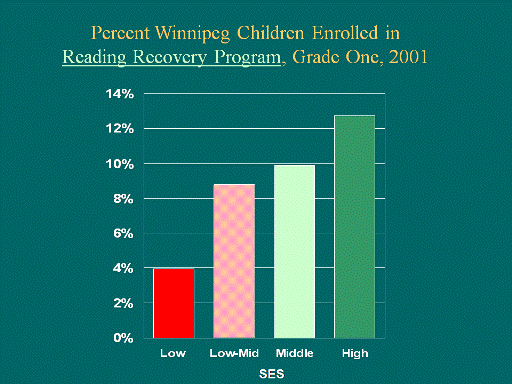| front |1 |2 |3 |4 |5 |6 |7 |8 |9 |10 |11 |12 |13 |14 |15 |16 |17 |18 |19 |20 |review |
 |
The next question is ‘does the delivery of social services follow this needs-based pattern?’ Do we find a needs based delivery of education and social services to children of lower socioeconomic status who have such high needs? The noticeable differences in educational performance across Grade 3 and Grade 12 students make a compelling case for needs-based investment in the early years. We looked at one early literacy program in Winnipeg, the Reading Recovery program, an intensive one-on-one program for Grade 1 students having difficulty with learning to read. This graph shows that children from the low-SES group have the lowest overall participation rate in this program, even though one would expect those children to have the greatest need for the program.
Educators from these low-SES areas reported that so many of their Grade 1 students needed remedial reading instruction that they could not afford to provide the resource-intensive Reading Recovery program to all of them. Many high-need schools therefore use their early literacy funds for programs that are less intensive but reach more children. |